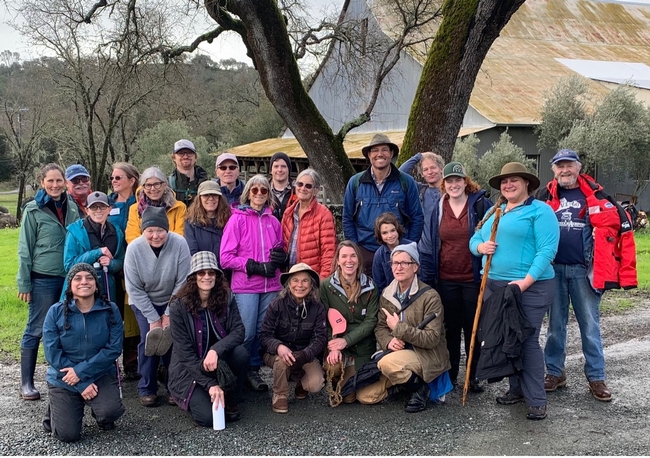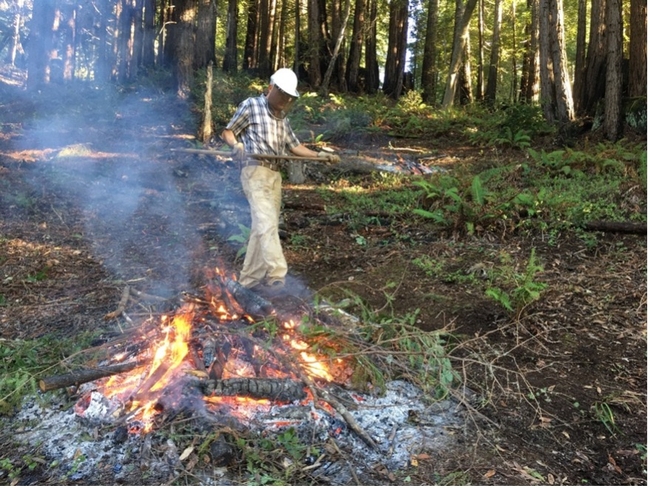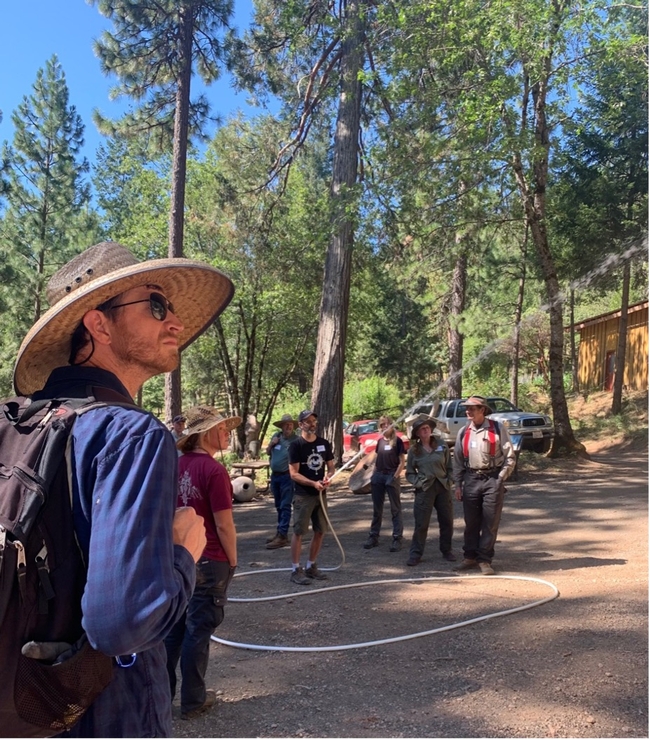Posts Tagged: map
Lawn-pocalypse! Surviving Drought
Ah, summer! The season of sunburns, pool parties, and… lawn droughts. If your once lush, green carpet now looks like a crunchy brown doormat, you're not alone. Let's dive into why your yard is staging a dramatic death scene and what you can do to...

Bermuda grass and weeds overtaking drought stressed turf grass.
ESRI User Conference 2023 – Day 2: AGOL Map Viewer
The thing that I possibly like the most about the ESRI Users Conference is that you not only get to see all of the recent updates that the company has recently developed but also glimpses of what is coming soon. In particular, I am excited about the advancements that they have made in respect to web mapping applications.
Are you an ArcGIS Online user, and have been wondering when to transition from the Traditional Web Map Viewer to the new Web Map Viewer? To answer that question, for myself, I think the time is now. At this point, per ESRI, there are now only four remaining functionalities that remain to be added to the new Map Viewer to give it all of the functionality that the Traditional Map Viewer had, which will be discontinued in late 2025, including the abilities to:
- Calculate fields (this would be nice to have)
- Add additional relationships to related records (something I have never needed to do previously)
- Vector tile style editing (not something I have ever needed to do, but which I could see being useful for some people)
- Saving/duplicating layers (there is a relatively simple work around for this, but it would be nice to have it built into the Map Viewer)
That said, there are far more than four added functionalities that the new Map Viewer has that the old version lacks, including:
- Easier browsing of data
- Feature editing enhancements
- Analysis enhancements, both for vectors and rasters
- Shortcuts
- Improved visibility, filtering, and effects (on the fly)
- Toggleable layers
- Charts (donut and pie)
- Label enhancements (including improved bookmarks and placements)
- Blending (in a group layer); including blending layers with basemaps and multiply effects
- Added display expressions
- Multidimensional imagery support, including an imagery slider
- The ability to upload feature symbols (svg)
- Sketch layers (as opposed to Classic's notes) with snapping, and also with the ability to upload custom symbols
- The ability to add and manually georeferenced media layers (jpg or png) using control points (on which media blending and effects can also be applied)
Besides all of these additions, the interface has been thoughtfully revamped with usability and efficiency in mind. Some of the above enhancements will now allow you to complete some work flows/functions several times faster than they could be done before. I must admit that I am very pleased!
Forest research and outreach compiles forestry voices in new story map project
For the past four years, Kim Ingram has been listening closely to the private forest landowners who participate in her Forest Stewardship Workshop series. During the workshops, landowners share their experiences clearing thickets of vegetation, replanting post-wildfire and tackling invasive species, and their concerns of who will take care of their forest when they're gone.
To alleviate their stress, Ingram–Forest Stewardship Education coordinator with University of California Agriculture and Natural Resources–turns to natural resource professionals from CAL FIRE, local Resource Conservation Districts, and the U.S Forest Service who can share knowledge and resources with participants. Recently, Ingram developed a story map that aims to provide landowners with a platform they can use to share their experiences and ways that they have been empowered to manage their land.
"It's not uncommon for small forest landowners to feel overwhelmed with their forest management responsibilities and uncertain over what steps to take first," said Ingram. "Through the Forest Stewardship Workshops and this story map project, we hope to show that there is an entire community of forest landowners in the same situation, learning from each other and moving forward towards their management goals."
The Forest Stewardship Story Map team used ArcGIS StoryMaps to design the project, with 15 participants providing interviews and visual content. StoryMaps provides a user-friendly interface where website visitors can either click on a county to view specific interviews or scroll to view the stories.
The forestry team plans to interview at least one landowner and natural resource professional in every forested county in California so private forest landowners have a local contact or can become inspired by a project in their area.
Theresa Ciafardoni, a forest landowner in Nevada County, said that the UC ANR Forest Stewardship Workshop helped her manage postfire restoration and long-term land use planning.
"It opened up so many options and possibilities," said Ciafardoni. "All the individuals who presented in the Forest Stewardship Workshop were open to phone calls for specific questions and provided invaluable technical assistance."
Involving landowners and forestry professionals with this project was an early decision made by Ingram, who believed it was important that the map held appeal beyond hosting stories. Now, the project functions as a networking tool for landowners seeking professional assistance, too.
Past Forest Stewardship Workshop presenters shared their contact information and the motivations behind their forest management work so that landowners could find assistance in their area. The professionals currently hosted on the map include Resource Conservation District managers, UC ANR forestry advisors and private contractors.
"The most motivated landowners are invested not only economically, but their heart is into it," said Ryan Tompkins, UC Cooperative Extension forestry advisor for Plumas, Sierra and Lassen counties. "The natural world is full of uncertainty, but they're committed to continuing education and learning about how to be a good land steward. This takes a certain level of humility recognizing that our tenure as a steward on the land is a very short period of a forest's lifetime."
Looking ahead, the team envisions the map as a working document that will eventually include interviews with indigenous tribal members who focus on traditional ecological knowledge projects, interviews and information from the UC ANR Postfire Forest Resilience Program, and a feature that will filter stories by topic (e.g. reforestation or prescribed burning).
"This isn't a project that could be completed by one person," explained Grace Dean, Forest Stewardship communications specialist. "The same way that Kim and other presenters explain forest management as a collaborative process holds true for this project."
The Forest Stewardship Workshop series gives participants the ability to start as beginners and build upon their knowledge and experiences. In the same vein, this story map provides the Forest Stewardship team a solid base of real stories to add on to over time. The hope is that it will grow into a multifaceted tool reaching new forest landowners, eventually enveloping their stories within the small forest landowner community.
To view the Forest Stewardship Story Map, visit: https://storymaps.arcgis.com/stories/bd062108d9894da7920d7aef06fe2c2c.
Climate-Change Resources
University of California UC ANR Green Blog (Climate Change and Other Topics) https://ucanr.edu/blogs/Green/index.cfm?tagname=climate%20change (full index)
Examples:
- Save Trees First: Tips to Keep Them Alive Under Drought https://ucanr.edu/b/~CdD
- Landscaping with Fire Exposure in Mind: https://ucanr.edu/b/~G4D
- Cities in California Inland Areas Must Make Street Tree Changes to adapt to Future Climate https://ucanr.edu/b/~oF7
Drought, Climate Change and California Water Management Ted Grantham, UC Cooperative Extension specialist (23 minutes) https://youtu.be/dlimj75Wn9Q
Climate Variability and Change: Trends and Impacts on CA Agriculture Tapan Pathak, UC Cooperative Extension specialist (24 minutes) https://youtu.be/bIHI0yqqQJc
California Institute for Water Resources (links to blogs, talks, podcasts, water experts, etc.) https://ciwr.ucanr.edu/California_Drought_Expertise/
UC ANR Wildfire Resources (publications, videos, etc.) https://ucanr.edu/News/For_the_media/Press_kits/Wildfire/ (main website)
-UC ANR Fire Resources and Information https://ucanr.edu/sites/fire/ (main website)
-Preparing Home Landscaping https://ucanr.edu/sites/fire/Prepare/Landscaping/
UC ANR Free Publications https://anrcatalog.ucanr.edu/ (main website)
- Benefits of Plants to Humans and Urban Ecosystems: https://anrcatalog.ucanr.edu/pdf/8726.pdf
-Keeping Plants Alive Under Drought and Water Restrictions (English version) https://anrcatalog.ucanr.edu/pdf/8553.pdf
(Spanish version) https://anrcatalog.ucanr.edu/pdf/8628.pdf
- Use of Graywater in Urban Landscapes https://anrcatalog.ucanr.edu/pdf/8536.pdf
- Sustainable Landscaping in California https://anrcatalog.ucanr.edu/pdf/8504.pdf
Other (Non-UC) Climate Change Resources
Urban Forests and Climate Change. Urban forests play an important role in climate change mitigation and adaptation. Active stewardship of a community's forestry assets can strengthen local resilience to climate change while creating more sustainable and desirable places to live. https://www.fs.usda.gov/ccrc/topics/urban-forests
Examining the Viability of Planting Trees to Mitigate Climate Change (plausible at the forest level) https://climate.nasa.gov/news/2927/examining-the-viability-of-planting-trees-to-help-mitigate-climate-change/
Reports and other information resources coordinated under the auspices of the United Nations and produced through the collaboration of thousands of international scientists to provide a clear and up to date view of the current state of scientific knowledge relevant to climate change. United Nations Climate Action
Scientific reports, programs, action movements and events related to climate change. National Center for Atmospheric Research (National Science Foundation)
Find useful reports, program information and other documents resulting from federally funded research and development into the behavior of the atmosphere and related physical, biological and social systems. Search and find climate data from prehistory through to an hour ago in the world's largest climate data archive. (Formerly the "Climatic Data Center") National Centers for Environmental Information (NOAA)
Think tank providing information, analysis, policy and solution development for addressing climate change and energy issues (formerly known as the: "Pew Center on Global Climate Change"). Center for Climate & Energy Solutions (C2ES)
Mapping Resilience: A Blueprint for Thriving in the Face of Climate Disaster. The Climate Adaptation Knowledge Exchange (CAKE) was launched in July 2010 and is managed by EcoAdapt, a non-profit with a singular mission: to create a robust future in the face of climate change by bringing together diverse players to reshape planning and management in response to rapid climate change. https://www.cakex.org/documents/mapping-resilience-blueprint-thriving-face-climate-disaster
Cal-Adapt provides a way to explore peer-reviewed data that portrays how climate change might affect California at the state and local level. We make this data available through downloads, visualizations, and the Cal-Adapt API for your research, outreach, and adaptation planning needs. Cal-Adapt is a collaboration between state agency funding programs, university and private sector researchers https://cal-adapt.org/
Find reports, maps, data and other resources produced through a confederation of the research arms of 13 Federal departments and agencies that carry out research and develop and maintain capabilities that support the Nation's response to global change. Global Change (U.S. Global Change Research Program)
The Pacific Institute is a global water think tank that combines science-based thought leadership with active outreach to influence local, national, and international efforts to develop sustainable water policies. https://pacinst.org/our-approach/
Making equity real in climate adaptation and community resilience policies and programs: a guidebook. https://greenlining.org/publications/2019/making-equity-real-in-climate-adaption-and-community-resilience-policies-and-programs-a-guidebook/
Quarterly CA Climate Updates and CA Drought Monitor Maps (updated each Thursday) https://www.drought.gov/documents/quarterly-climate-impacts-and-outlook-western-region-june-2022
Drought focus of Water Resources IMPACT magazine special issue
UC ANR experts address emotional toll of drought
Preparing the American West for prolonged drought is the focus of a double issue of Water Resources IMPACT magazine. The California Water Commission staff are guest editors for this special open-access edition of the magazine, which is published by the American Water Resources Association.
Faith Kearns, academic coordinator of University of California Agriculture and Natural Resources' California Institute for Water Resources, is among the authors delving into how drought impacts people and the environment and how we can better prepare for the inevitable.
The first issue, published on Feb. 14, focuses on water scarcity issues confronting California and the ways these issues affect different sectors.
In “Trauma, Care, and Solidarity: Addressing the Emotional Toll of Chronic Drought,” Kearns highlights the effects of drought on mental health. She points to the spike in suicide hotline calls when wells ran dry in Southeast Asian communities in California's Central Valley.
By listening to Southeast Asian farmers, Ruth Dahlquist-Willard and Michael Yang of UC Cooperative Extension were able to “lighten the load” for them by providing pragmatic support, Kearns writes.
“The scale of some of these highly emotional issues – drought, wildfires, climate change – can make them seem incredibly difficult, if not impossible, to deal with,” Kearns said. “At the same time, they are affecting everyone living in the western U.S. on a daily basis. I wanted to highlight and provide models based on work that people – whether they are researchers, clinical psychologists, or Cooperative Extension advisors – are doing right now to ease the way.”
The authors who contributed to the double issue are a diverse array of Tribal experts, academics, nongovernmental organization thought-leaders, water managers and water policy influencers, each of whom brings their own perspective on the topic of drought. Their expertise and perspectives in climate science, water policy and water management will help inform drought-related decision-making and support policies that better prepare the state to thrive during periods of prolonged water scarcity.
In addition to Kearns, the first issue includes articles contributed by:
- Samantha Stevenson, University of California, Santa Barbara
- Jay Lund, University of California, Davis
- Ron Goode, North Fork Mono Tribe
- Andy Fecko, Placer County Water Agency
- Jeff Mount, Public Policy Institute of California, and Ted Grantham, University of California, Berkeley/UC Cooperative Extension
- Nat Seavy and Karyn Stockdale, National Audubon Society
- Kjia Rivers, Community Water Center
- Cannon Michael, Bowles Farming
- Michelle Reimers, Turlock Irrigation District
The January/February edition of Water Resources IMPACT magazine can be accessed, free of charge, on the American Water Resources Association website at https://www.awra.org under “Publications.”
The second issue, to be published in March, will focus on drought response, considering the options for adaptation. This two-part series complements the Commission's work on strategies to protect communities and fish and wildlife in the event of a long-term drought.








